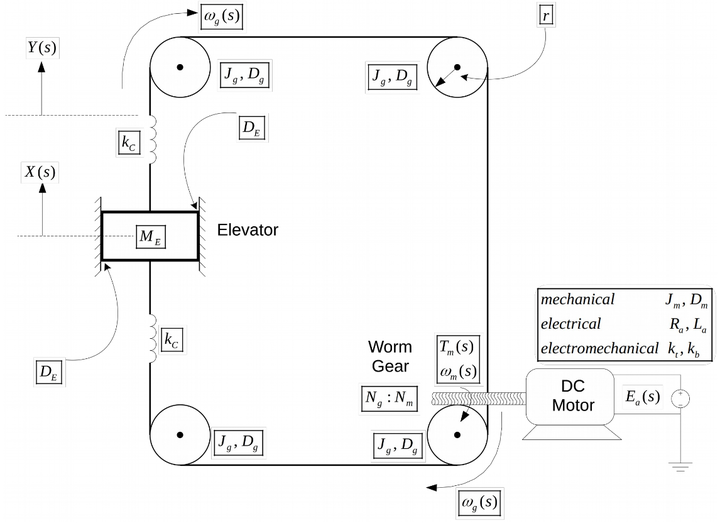Twilight Zone Tower of Terror II

Abstract
Concepts learned in Linear Control Systems were used to analyze a system which contains both mechanical and electrical components. Mechanical components were modeled using a Force/Torque-Velocity analogy. Block diagrams resulted from the relationships between the components and signals. Set-up has been done so the system can be simulated in Simulink with the given design parameters.
Part 1 Introduction
Concepts learned in Linear Control Systems were used to analyze a system which contains both mechanical and electrical components. Mechanical components were modeled using a Force/Torque-Velocity analogy. Block diagrams resulted from the relationships between the components and signals. Set-up has been done so the system can be simulated in Simulink with the given design parameters.
Part 3 Objective
Starting from where part two of the project left off, functional simulations of the ideal system, now real world constraints and desired specifications must be applied. The management at Disney World wants their engineers to design an elevator that offers their customers a fun and enjoyable experience. To achieve this result, real world constraints will have to be taken into consideration, and some design specification must be set to the approval of the customers. Therefore the elevator must have a minimum height overshoot at requested by the customers, the timing must not inhibit the overall experience, so the speed, acceleration, and ride duration must be carefully selected, and physical limitation of the elevator and motor must be considered.